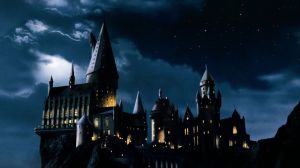After becoming a critical favorite on series like Prez, The Flintstones, and Exit Stage Left: The Snagglepuss Chronicles, writer Mark Russell joined artist Stephen Byrne in the newly-launched Wonder Twins, a story based on the characters from the old Super Friends cartoons who come to Earth in order to get a new lease on life, and get put up in the Hall of Justice by Superman.
Videos by ComicBook.com
The series has launched to solid reviews and a little controversy about some of its less-than-all-ages elements, but seems to be heading for sales and critical success in line with the other titles released through Brian Michael Bendis’s Wonder Comics imprint.
“What appealed to me about the Wonder Twins is that they’re sort of blank slates,” Russell admitted. “Also that the powers are kind of underwhelming, so there’s not a lot of expectations placed on them. That freed me from having to tell the normal superhero stories where they’re going after Darkseid or they’re going after Doomsday or something. I can have them, because of their underwhelming nature of their powers, go after smaller scale stories. Trying to stop a vampire or, trying to or taking down this 50-year-old insect guy who’s long over the hill and is basically declining as a supervillian to obscurity.”
Russell said that he also wanted to explore the Hall of Justice, but also wanted to make sure his book was separated from the story going on in Scott Snyder’s Justice League stories, where the biggest of the big tales in the DC Universe take place there.
“I have them hanging out in basically what was the old control room, which was the control room from the 1970s and 80s Super Friends TV show, not the one that Scott’s Hall of Justice is dealing with now,” Russell said. “So, in a lot of ways, it really, it helped to create the world of secondary obscurity that I wanted to create for the Wonder Twins. They’re not allowed in the main control room. They have to go hang out in this minor control room. I also wanted to talk a little bit about the nature of the Hall of Justice and why you would have such a thing. I included a page where Superman is giving them the tour, he’s explaining how they use the Hall of Justice to coordinate hero responses to crisis so the right hero goes to the right crisis and they don’t all go to the same one. That’s like the raison d’être of the Hall of Justice. So that’s something that I really wanted to, and explaining it to new members who are from another planet seemed like the perfect opportunity.”
While Russell has been working on the fringes of DC’s continuity, he told us that both Snyder and Bendis have been welcoming and supportive as he navigates the story, which is an in-universe superhero tale, unlike most of what he has become known for.
“Bendis has been very supportive about not only making this part of the Wonder Comics, but also about letting it be its own thing and just letting me write the way I see fit and not expecting me to conform too much to what the other wonder comics are doing or even too much to what the DC continuity is, so it’s been really good to have that sort of freedom while working within DC continuity,” Russell said.
Among the things Bendis has been generous about? Superman, the character whose destiny Bendis is primarily responsible for charting at the moment, who has appeared in one form or another in the Wonder Comics launch issues.
“Superman does play a larger role than the other superheroes because he is sort of a father slash mentor to the Wonder Twins,” Russell explained. “They are here on Earth without their family and so Superman has kind of adopted that role of being their father figure here on Earth. It really is about the major heroes going off and doing their own thing, fighting against the major threats to the world, and leaving the Wonder Twins to sort of figure out how they should best serve the world and also to go after the villains that are, maybe, beneath the contempt of the Justice League. I think it is influenced by my own experiences as a member of Generation X in that we were the first generation where the parents, sort of went off and did their own thing and we were kind of raised by each other or by our friends. I wasn’t a latchkey kid, but the whole generation seems to be the generation of the latchkey kids. So, I think in a lot of ways that’s what the Wonder Twins is about, is about, like, young people having to figure the world out for themselves.”
Wonder Twins #1 is available in stores and online now.








